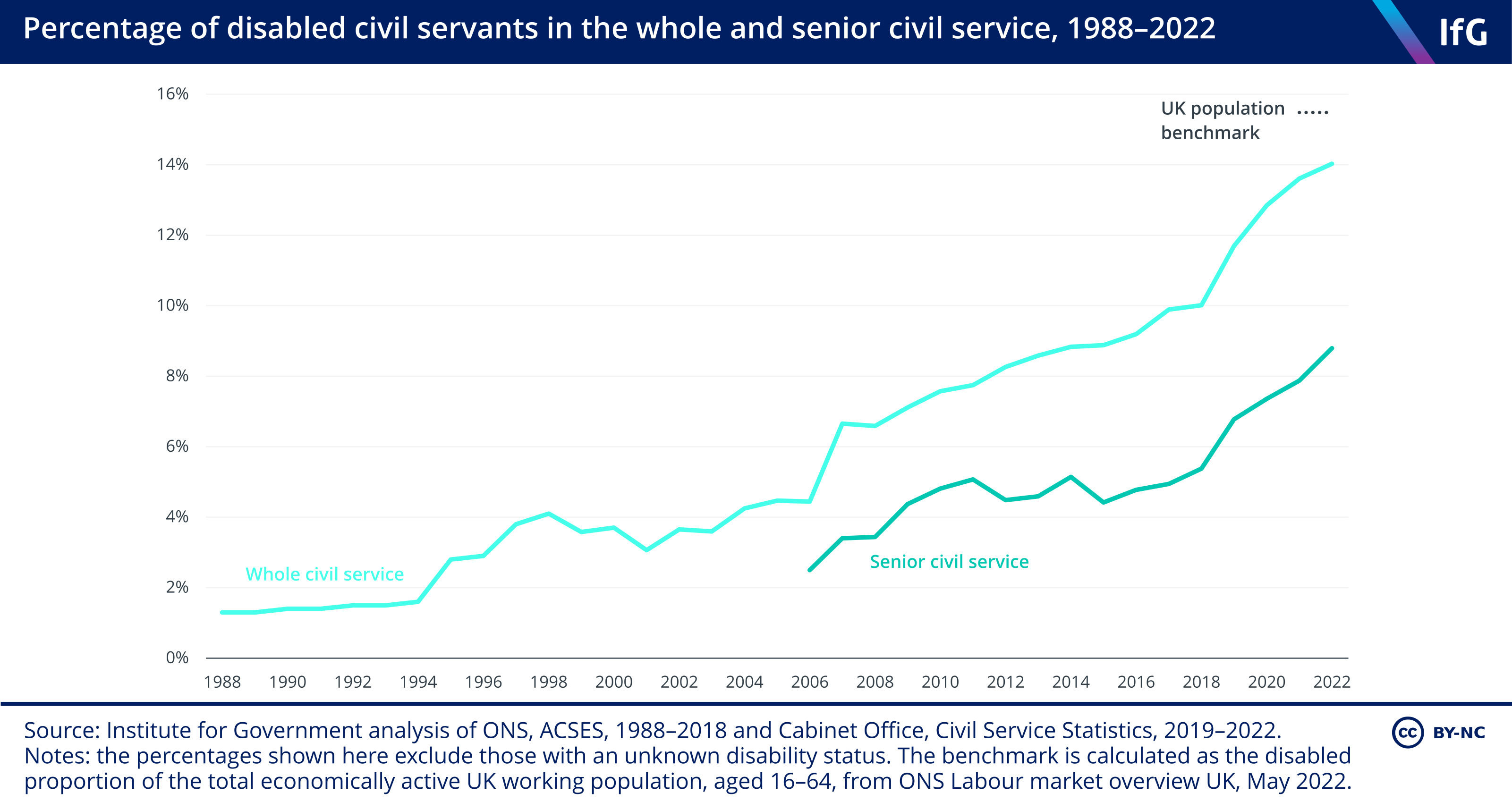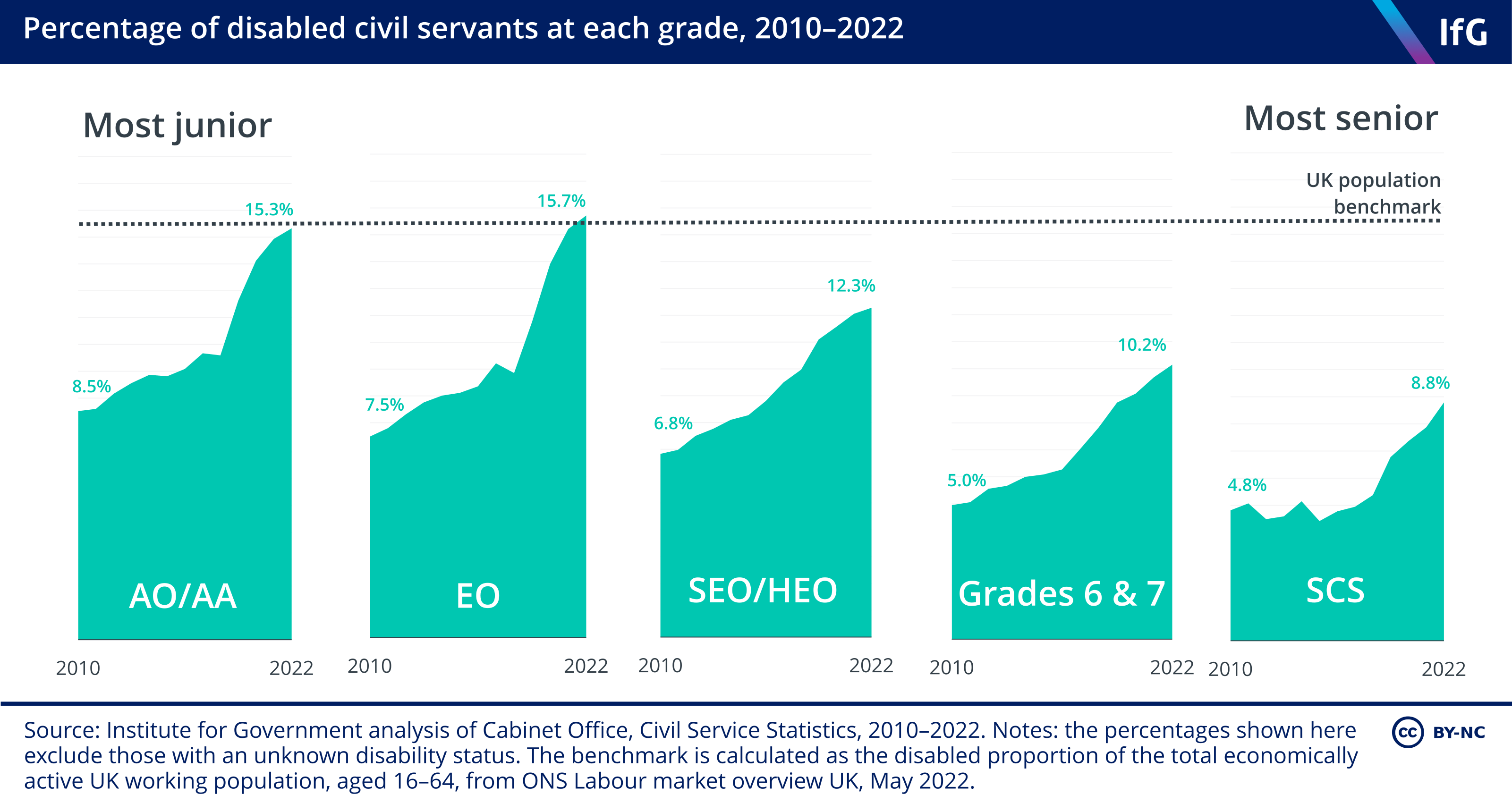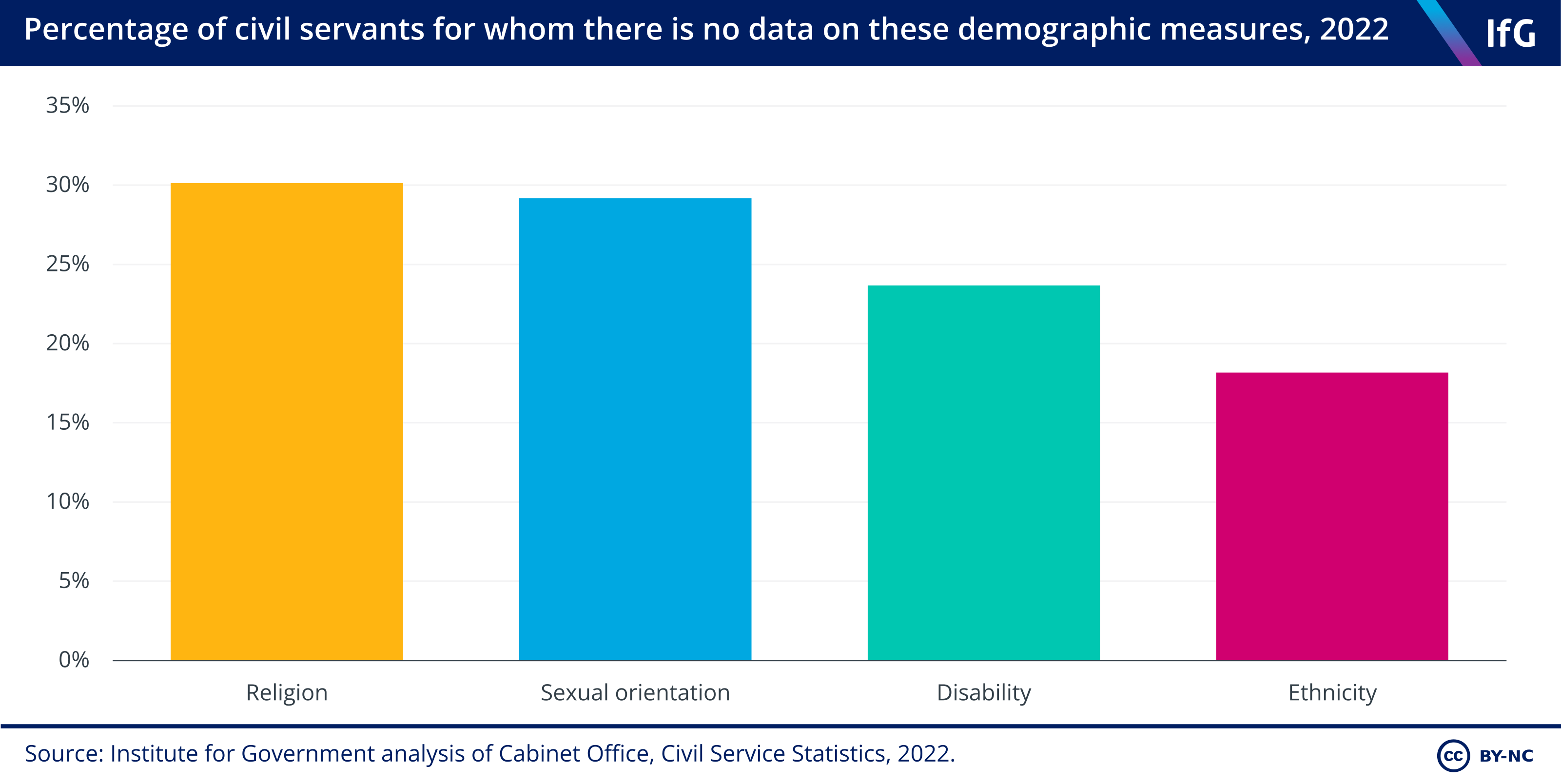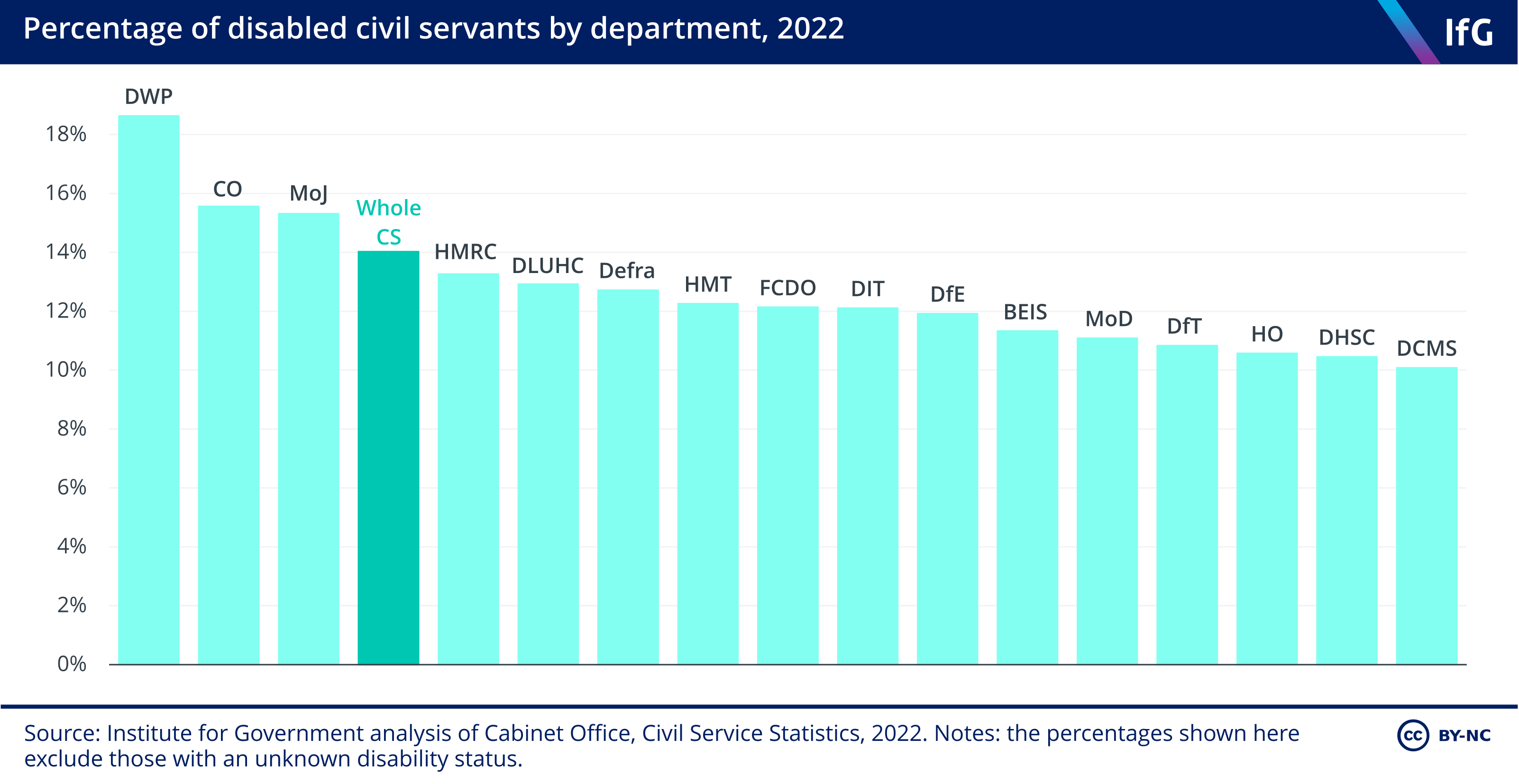Disability in the civil service
Why is it important that the disabled population is represented in the civil service?

Why is it important that the disabled population is represented in the civil service?
Diversity and inclusion is important because a more diverse civil service leads to better decisions and a better delivery of public services. According to the Civil Service Diversity and Inclusion Strategy for 2022 to 2025, “a truly diverse workforce and culture of openness and inclusivity” acts as “a means of delivering better outcomes to the citizens we serve.”1
Sarah Healey, permanent secretary for the Department for Digital, Culture, Media and Sport (DCMS) and civil service disability champion, has emphasised the importance of increasing the representation of disabled people at all grades to be able to “truly reflect British society.”2 By employing staff representative of the society it serves, government can draw on the experiences of officials to better understand the impact of policy decisions.
What is the proportion of disabled civil servants?

As of 2022, 14% of civil servants who declare their disability status are disabled, a significant increase from 1.3% in 1988 but still below the UK working population benchmark of 15.5%. In the senior civil service, those with disabilities make up 8.8% of the workforce.
How does this vary by civil service grade?

The percentage of disabled civil servants (where known) has increased at every grade since 2010. The most junior grades, administrative officers and assistants (AO/AA) and executive officers (EO) maintain the highest proportions, with 15.3% and 15.7% of civil servants respectively declaring themselves as disabled.
The proportion of disabled civil servants is lower at the highest levels. After slow progress among the senior civil service (SCS), there has been an improvement over the last four years. The proportion of disabled civil servants has increased between 2010 (4.8%) and 2022 (8.8%).

There is no data on the disability status of 24% of civil servants. While individuals may have good reasons not to share their disability status, this data is important in determining the true representativeness of the civil service. Understanding how diversity varies by grade and department helps identify the factors which stop disabled civil servants from being promoted to senior positions.
How does this vary by department?

14% of all civil servants have declared themselves as disabled, where known. This figure is driven by the relatively high proportion of civil servants with disabilities in two of the largest government departments, the Department for Work and Pensions (DWP) and the Ministry of Justice (MoJ), with 19% and 16% of staff being disabled respectively. Other departments have much lower figures – with the lowest being DCMS, where 10% of employees are disabled.
[[{"fid":"17735","view_mode":"default","fields":{"format":"default","field_file_image_alt_text[und][0][value]":"Disability change by dept","field_file_image_title_text[und][0][value]":"Disability change by dept"},"type":"media","field_deltas":{"1":{"format":"default","field_file_image_alt_text[und][0][value]":"Disability change by dept","field_file_image_title_text[und][0][value]":"Disability change by dept"}},"attributes":{"alt":"Disability change by dept","title":"Disability change by dept","class":"media-element file-default","data-delta":"1"}}]]The DWP (13 percentage point increase), MoJ (10 percentage points) and the Cabinet Office (10 percentage points) have had the greatest increases in the proportion of disabled civil servants since 2010. Despite their relatively high percentage of disabled staff, HMRC and the Department for Environment, Food and Rural Affairs (Defra) have seen a slight decrease since 2010.
What steps are being taken to support disabled civil servants?
A number of initiatives have been launched to increase the number of disabled civil servants and to improve the experience of existing disabled employees.
- The government aims to increase the number of civil service organisations signed up to the Disability Confident employer scheme which encourages employers to recruit, retain and develop disabled people.3
- A commitment to meet workplace adjustment needs in a responsive and timely manner.4
- A development programme aiming to accelerate the development of disabled civil servants.5
- The Civil Service Disability Network, which seeks to improve disability inclusion policy in the civil service.6
- Civil Service, Civil Service Diversity and Inclusion Strategy: 2022 to 2025, 24 February 2022, https://www.gov.uk/government/publications/civil-service-diversity-and-inclusion-strategy-2022-to-2025
- Healey S, Putting disability at the heart of everything we do, Civil Service blog, 28 July 2021, https://civilservice.blog.gov.uk/2021/07/28/putting-disability-at-the-heart-of-everything-we-do/
- Department for Work and Pensions, Disability Confident employer scheme, 15 June 2021, https://www.gov.uk/government/collections/disability-confident-campaign
- Healey S, Putting disability at the heart of everything we do, Civil Service blog, 28 July 2021, https://civilservice.blog.gov.uk/2021/07/28/putting-disability-at-the-heart-of-everything-we-do/
- Healey S, Disability and Diversity in Leadership, Civil Service blog, 9 June 2021, https://civilservice.blog.gov.uk/2021/06/09/disability-and-diversity-in-leadership/
- Civil Service, Civil Service Disability Network, https://civilservice.blog.gov.uk/civil-service-disability-network/
- Topic
- Civil service
- Keywords
- Civil servants
- Publisher
- Institute for Government